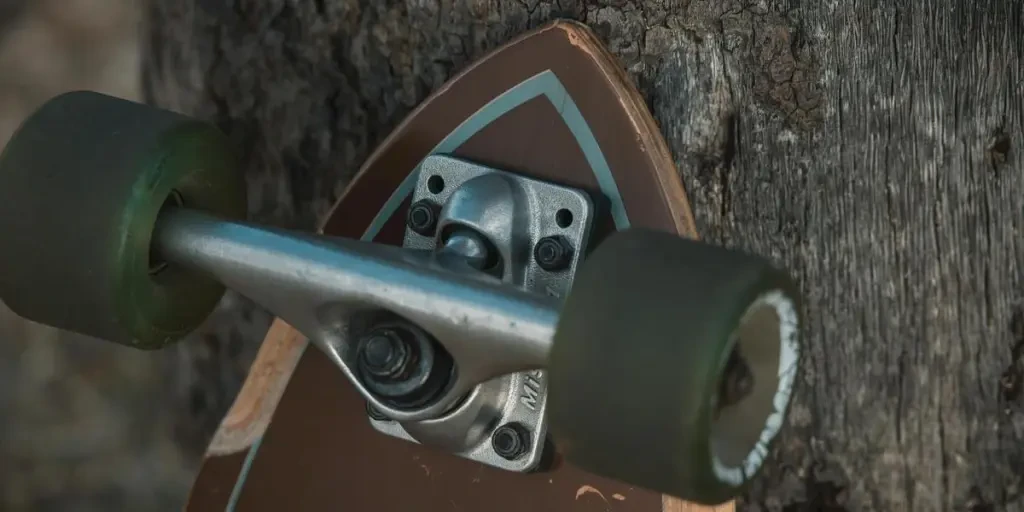Hybrid wood is making waves in the sports and accessories industry, offering a blend of natural wood and synthetic materials that enhance performance, durability, and aesthetic appeal. This article delves into the market overview of hybrid wood, highlighting its growing significance and the factors driving its adoption.
Table of Contents:
Market Overview of Hybrid Wood in Sports and Accessories
Innovative Materials and Design in Hybrid Wood Products
Performance and Durability of Hybrid Wood
Customization and Convenience for Diverse Needs
Technological Features and Benefits
Market Overview of Hybrid Wood in Sports and Accessories

The hybrid wood market is experiencing significant growth, driven by the increasing demand for high-performance and sustainable materials in the sports and accessories industry. According to a report by Statista, the global wood market is projected to reach a value of $178.1 billion by 2024, with a compound annual growth rate (CAGR) of 1.16% from 2024 to 2029. This growth is indicative of the rising popularity of wood-based products, including hybrid wood, which combines the best properties of natural wood and synthetic materials.
In the United States, the wood market is expected to generate $60.7 billion in value added by 2024, with a CAGR of 1.26% from 2024 to 2029. The output in the U.S. wood market is projected to reach $125.6 billion by 2024, reflecting a CAGR of 1.11% over the same period. This robust growth is fueled by advancements in manufacturing technologies and the increasing adoption of hybrid wood in various applications, including sports equipment and accessories.
The hybrid wood market is also gaining traction in Europe. In Germany, the wood market is projected to achieve a value added of $12.9 billion by 2024, with a modest CAGR of 0.48% from 2024 to 2029. The output in the German wood market is expected to reach $35.2 billion by 2024. Similarly, the Netherlands and the United Kingdom are witnessing steady growth in their wood markets, with projected values added of $1.7 billion and $7.0 billion, respectively, by 2024.
Key players in the hybrid wood market are focusing on innovation and sustainability to meet the evolving demands of consumers. Companies such as Wilson Sporting Goods, Babolat, and Yonex are incorporating hybrid wood into their product lines, offering enhanced performance and durability. These brands are leveraging advanced manufacturing techniques and materials to create products that cater to the needs of professional athletes and recreational users alike.
Sustainability is a crucial factor driving the adoption of hybrid wood in the sports and accessories industry. Consumers are increasingly seeking eco-friendly products that minimize environmental impact. Hybrid wood, with its combination of natural and synthetic materials, offers a sustainable alternative to traditional wood products. According to a professional report, the value added margin in the global wood market is projected to be 38% by 2024, highlighting the economic viability of sustainable wood products.
Future trends in the hybrid wood market include the integration of smart technologies and the development of new material compositions. Manufacturers are exploring ways to incorporate sensors and other smart features into hybrid wood products, enhancing their functionality and user experience. Additionally, ongoing research and development efforts are focused on creating new hybrid materials that offer superior performance and durability.
Innovative Materials and Design in Hybrid Wood Products

Advanced Material Composition
The evolution of hybrid wood products has been significantly influenced by the integration of advanced materials. Traditional wood types such as poplar, aspen, and paulownia are commonly used due to their lightweight and high-energy properties. Poplar and aspen, for instance, are known for reducing weight while maximizing pop and responsiveness, making them ideal for applications where agility and performance are crucial. Paulownia, on the other hand, offers a slightly more durable option while maintaining a lightweight profile.
In addition to these traditional woods, denser woods like maple are often incorporated to enhance power, stability, and durability, albeit at the cost of added weight. This combination of lightweight and dense woods creates a balanced core that can cater to various performance needs.
Moreover, the inclusion of metal and composite materials such as graphene, carbon, and Titanal has revolutionized the strength and stiffness of hybrid wood products. These materials are particularly prevalent in high-end designs, where maintaining a low weight without compromising on strength is paramount. For example, many modern all-mountain skis utilize carbon to keep the weight low while enhancing performance, as reported by industry experts.
Cutting-Edge Design Trends
The design trends in hybrid wood products are continuously evolving, driven by the need for improved performance and user experience. One notable trend is the use of hybrid in-mold technology, which combines the benefits of different materials to create a product that is both lightweight and durable. This approach is commonly seen in the construction of ski helmets, where a mix of ABS, in-mold, and hybrid construction types are used to balance weight, bulk, and ventilation.
Another trend is the modular design, which allows for greater flexibility and customization. For instance, the Apogee One bike frame features modular dropouts that can accommodate mixed wheel sizes and future drivetrain standards. This level of customization ensures that the product can adapt to the evolving needs of the user, providing a more personalized experience.
Furthermore, the integration of smart technologies into the design of hybrid wood products is becoming increasingly common. This includes features such as smart sensors and connectivity options that enhance the functionality and convenience of the product. For example, some modern tents now come with smart integration features that improve ventilation and ease of setup, making them more user-friendly and efficient.
Performance and Durability of Hybrid Wood

Enhanced Performance Features
Hybrid wood products are designed to offer superior performance across various applications. The combination of lightweight and dense woods, along with advanced composite materials, results in products that are both agile and powerful. For instance, the use of poplar and aspen in the core of all-mountain skis provides a high-energy and responsive feel, while the addition of carbon and Titanal enhances strength and stiffness.
Moreover, the design of hybrid wood products often includes features that improve their overall performance. For example, the parallelogram shape of the Durston X-Mid tent ensures that doorways are not blocked by poles, enhancing accessibility and convenience. Similarly, the use of a double-wall build in tents boosts ventilation, making them more comfortable for extended use.
Long-lasting Durability
Durability is a key consideration in the design of hybrid wood products. The use of dense woods like maple, along with composite materials such as graphene and carbon, ensures that these products can withstand the rigors of regular use. For example, ABS helmets are known for their tough construction, which makes them resistant to cosmetic damage like dings and dents. This durability is particularly important for products that are exposed to harsh conditions, such as skis and helmets.
In addition to the inherent durability of the materials used, the design of hybrid wood products often includes features that enhance their longevity. For instance, the use of a sil/PEU polyester fly in tents ensures that they remain waterproof over time, while the integration of stiffening strips in paddle boards increases their rigidity and durability.
Customization and Convenience for Diverse Needs

Tailored Customization Options
One of the key advantages of hybrid wood products is their ability to be customized to meet the diverse needs of users. This customization can take various forms, from the selection of materials to the design of the product itself. For example, the Apogee One bike frame offers multiple build options and sizes, allowing users to choose a configuration that best suits their needs.
Similarly, the use of modular designs in hybrid wood products allows for greater flexibility and adaptability. This is particularly important for products that need to accommodate different user preferences and requirements. For instance, the modular dropouts in the Apogee One bike frame enable it to support mixed wheel sizes and future drivetrain standards, providing a more versatile and customizable solution.
User-Friendly Convenience
In addition to customization, hybrid wood products are designed with user convenience in mind. This includes features that make them easier to use and maintain. For example, the Durston X-Mid tent is designed with a user-friendly setup that includes standard tent poles, making it easier to assemble and disassemble. Similarly, the use of smart integration features in modern tents enhances their functionality and ease of use.
Moreover, the design of hybrid wood products often includes features that improve their overall usability. For instance, the use of a double-wall build in tents boosts ventilation, making them more comfortable for extended use. Similarly, the integration of stiffening strips in paddle boards increases their rigidity and stability, making them easier to handle and maneuver.
Technological Features and Benefits

Smart Integration and Technological Advancements
The integration of smart technologies into hybrid wood products is a growing trend that offers numerous benefits. This includes features such as smart sensors and connectivity options that enhance the functionality and convenience of the product. For example, some modern tents now come with smart integration features that improve ventilation and ease of setup, making them more user-friendly and efficient.
Moreover, the use of advanced materials and technologies in the design of hybrid wood products ensures that they offer superior performance and durability. For instance, the use of graphene and carbon in the construction of skis and helmets enhances their strength and stiffness, while maintaining a low weight. This results in products that are both agile and powerful, providing a better user experience.
Key Benefits for Users
The key benefits of hybrid wood products include improved performance, durability, and customization. The combination of lightweight and dense woods, along with advanced composite materials, results in products that are both agile and powerful. This ensures that users can enjoy a high-energy and responsive feel, while also benefiting from enhanced strength and stiffness.
In addition to performance and durability, hybrid wood products offer a high level of customization and convenience. The use of modular designs and smart integration features allows users to tailor the product to their specific needs, providing a more personalized and user-friendly experience. This level of customization ensures that the product can adapt to the evolving needs of the user, providing a more versatile and adaptable solution.
Conclusion
The advancements in hybrid wood products have revolutionized the sports and accessory industry, offering superior performance, durability, and customization. The integration of advanced materials and smart technologies ensures that these products can meet the diverse needs of users, providing a more personalized and user-friendly experience. As the industry continues to evolve, it is expected that hybrid wood products will continue to push the boundaries of innovation, offering even greater benefits and opportunities for users in the future.




